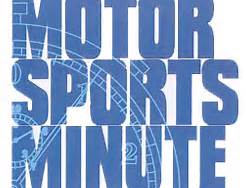Getting Up To Speed For Indy
- Updated: May 17, 2011
Practice for the Centennial running of the 2011 Indianapolis 500 has seen four days of scheduled track time already cut in half by rain and a big dose of cold, windy weather.
So, nothing new there, since rain, and the lack of quality track time always seems to be an issue at the Speedway. Back in the long-ago era when the “Month of May” was truly a Month, a few days of rain weren’t usually a problem. But several years ago, in the interest of saving teams money, four weeks became two, and qualifying is now held after just seven scheduled track days. When only 33-35 entrants were in the garage area, a few rainy days weren’t much of an issue. After a few crashes and blown engines, basically everyone made the show. But with forty cars having been on the track already this year, and Saturday/Sunday time-trials just three days of practice away, sunny skies and good track conditions are on everyone’s wish list.
The saving grace for all of this may be the thing that so many have complained about for so many racing seasons: Dallara chassis and Honda engines that have been around for so long that getting up to speed for most of the teams probably won’t take more than a few good days of practice. It’s like knowing what your wife is going to say after forty years of being married. These cars are fairly predictable.
Yes, for the eight rookies most of this is new and different, but with teams like Dale Coyne, Newman-Haas and Chip Ganassi backing them, even those first-year drivers should have an easier time of it in this final year of the well-tested equipment.
Penske, Ganassi, Newman-Haas usually have an advantage, having worked with these cars for so many years. But early practice results tell us that this may be a more balanced field than has been seen in several years.
Sure the red cars that usually dominate are among the fastest so far, but Ed Carpenter (Sarah Fisher Racing) was quickest last Saturday, and Alex Tagliani (Sam Schmidt Motorsports), was fastest on Monday’s full practice day. That portends a more wide-open field than we’ve seen recently. That can only be a good thing, despite the rain.
• For those of you driving down to Indy for the run for the pole this Saturday (and there used to be 100,00 + of you back in the day), a bonus will be a display in the infield of more than 250 vintage Indianapolis 500 Pace Cars, including the Stoddard -Dayton that paced the first 500 in 1911. These cars will take a ceremonial lap around the 2.5 mile oval after 6:00pm on Pole Day.
Paul Gohde heard the sound of race cars early in his life.
Growing up in suburban Milwaukee, just north of Wisconsin State Fair Park in the 1950’s, Paul had no idea what “that noise” was all about that he heard several times a year. Finally, through prodding by friends of his parents, he was taken to several Thursday night modified stock car races on the old quarter-mile dirt track that was in the infield of the one-mile oval -and he was hooked.
The first Milwaukee Mile event that he attended was the 1959 Rex Mays Classic won by Johnny Thomson in the pink Racing Associates lay-down Offy built by the legendary Lujie Lesovsky. After the 100-miler Gohde got the winner’s autograph in the pits, something he couldn’t do when he saw Hank Aaron hit a home run at County Stadium, and, again, he was hooked.
Paul began attending the Indianapolis 500 in 1961, and saw A. J. Foyt’s first Indy win. He began covering races in 1965 for Racing Wheels newspaper in Vancouver, WA as a reporter/photographer and his first credentialed race was Jim Clark’s historic Indy win.Paul has also done reporting, columns and photography for Midwest Racing News since the mid-sixties, with the 1967 Hoosier 100 being his first big race to report for them.
He is a retired middle-grade teacher, an avid collector of vintage racing memorabilia, and a tour guide at Miller Park. Paul loves to explore abandoned race tracks both here and in Europe, with the Brooklands track in Weybridge England being his favorite. Married to Paula, they have three adult children and two cats.
Paul loves the diversity of all types of racing, “a factor that got me hooked in the first place.”




![Porsche Fabcar crosses the finish line. [Robert Madara photo]](https://racingnation.com/wp-content/uploads/2023/11/FabcarFinish-108x70.jpeg)

![USF2000 Pro driver Lindsay Brewer. [Eddie LePine Photo]](https://racingnation.com/wp-content/uploads/2023/06/IMG_8825_2-108x70.jpg)